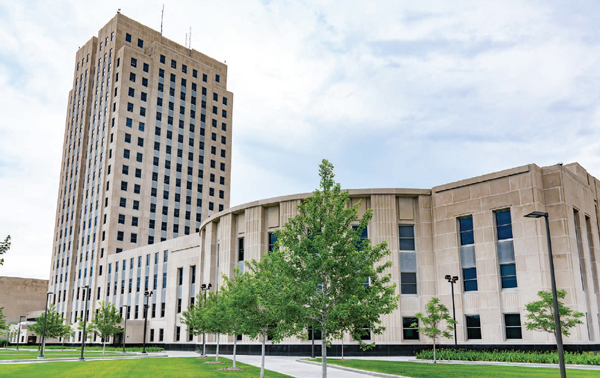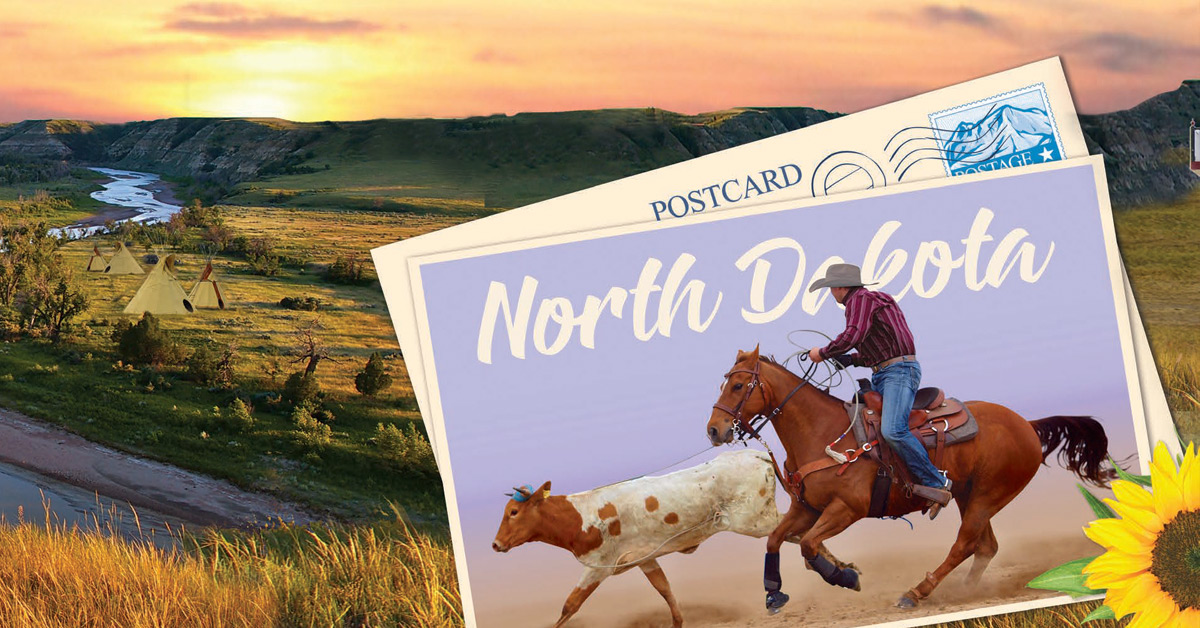The “Great Depopulation” — people moving from rural areas of the Midwest to urban areas, especially those along the East and West coasts — occurred throughout the 20th century. There’s probably no better example of this than in North Dakota.
The Peace Garden State, so nicknamed because of the International Peace Garden located on the state’s northern border with the Canadian province of Manitoba, had a population of some 680,000 people in 1930. Nearly 75 years later, in 2003, the state’s population dwindled to about 630,000. Economic stagnation also occurred as North Dakota’s population slowly but steadily declined over several decades.
Then the oil boom happened. Oil was first discovered in western North Dakota in the 1950s. It wasn’t until the 2000s, however, that hydraulic fracturing (or fracking), came into widespread use so the oil could be extracted more effectively.
Today, North Dakota ranks second in the nation for oil production behind only Texas, according to the U.S. Energy Information Administration. In 2018, the state produced 461.5 million barrels of crude oil. The boom has made millionaires of some landowners, who receive $50,000 or more a month in oil royalties. It also has brought tens of thousands of new people to the state, reversing the depopulation trend.
North Dakota’s population grew from 632,000 in 2003 to 760,000 last year, an increase of 20%, meaning one in five people are relatively new to the state. Many of the new arrivals are younger: Among all states, North Dakota has the highest proportion of 18- to 34-year-olds, according to a 2018 report from the Brookings Institution.
With the rise of oil, the Peace Garden State fared better than much of the nation during the recession. North Dakota’s unemployment rate rose to 4.3% for only two months during the recession, much lower than the national rate, which soared into double digits. With an improved national economy, North Dakota now faces a different challenge. The state has too many unfilled jobs and is having problems attracting workers. Moody’s Analytics economist Dan White told state lawmakers last year this is one of North Dakota’s “major speed limits on growth.”
Other major industries in the state include manufacturing, health care and agriculture, according to the North Dakota Department of Commerce. Ethanol production contributes more than $300 million annually to the state’s economy and supports more than 10,000 jobs, with an average annual wage of $64,000. A Trump administration effort to reduce regulations by granting waivers to oil refineries for ethanol use is causing concern for states like North Dakota, which is considered part of the Corn Belt.
Home sales and prices
One publication described the housing-market outlook in parts of North Dakota as a “housing-shortage tsunami” due to a growing population and not enough homes. This is exacerbated by the fact that the construction and energy industries compete for the same workers.

A North Dakota State University report found that the number of owner-occupied homes in the state grew from 276,642 units in 2010 to 320,650 units in 2014, an increase of 15.9%. The report cautioned, however, that future housing needs are difficult to forecast due to “uncertainty and a lack of data to describe the new normal for the state.”
Median home prices hit $220,800 through the first half of this year, according to Zillow. That’s up from $140,200 in 2009, or an increase of nearly 60%. The number of homes sold each year has plateaued since 2013. About 8,000 homes have been sold each year since then.
Unemployment
North Dakota has one of the lowest unemployment rates in the nation, ranking second behind Vermont this past August with a rate of 2.4%, according to the U.S. Bureau of Labor Statistics. Over the past decade, the Peace Garden State’s overall workforce has grown from 370,000 workers to about 405,000, an increase of roughly 10%.
A labor shortage, however, is a major growth impediment for the North Dakota economy. The state had nearly 14,000 unfilled job openings as of this past July, but state officials believe the actual figure is closer to 30,000 because companies may advertise one job posting even when hiring multiple people.
A report from the state’s workforce development council recommended expanding training and education programs, boosting marketing to attract new residents and easing licensing requirements for professionals from other states. The report also suggested making it easier for people to return to the workforce after serving time in prison.
Delinquencies and foreclosures
North Dakota’s mortgage delinquency rate, defined as loans 30 days or more past due, was 2.2% as of June 2019, well below the national rate of 4%, according to CoreLogic’s Loan Performance Insights Report. North Dakota’s delinquency rate is the same as it was in June 2018. The foreclosure rate in the state stood at 0.4% in December 2018, the same as the nationwide rate and unchanged on a year-over-year basis.
North Dakota’s number of foreclosure filings as measured by defaults, auctions and homes taken back by banks, or real estate owned (REO), totaled only 81 in 2013, according to Attom Data Solutions. In the past few years, these numbers have increased, but are still relatively low even for a state with a smaller population. In 2018, only 249 of these actions were recorded, according to Attom Data.
3 Cities to Watch
Fargo
The city was named after William G. Fargo, a director of the Northern Pacific Railroad and co-founder of what is now Wells Fargo bank. Nearly one in six North Dakotans — or about 125,000 people — live in Fargo, making it the most populous city in the state. Its top employers include a mix of health care companies and banks, as well as North Dakota State University. The median value of owner-occupied homes from 2013 to 2017 was $190,200, according to census figures, while the median household income over the same period was $50,561.
Minot
The fourth largest city in North Dakota with 47,000 people, it might be in the running for best informal slogan for any city in America: “Why not Minot? Freezin’s the reason.” Located in the north-central part of the state, it has benefited from the region’s economic boom. Although home prices dropped by 20% nationwide during the recession, Minot’s home prices went up by one-third. Nearby Minot Air Force Base, with 5,500 military personnel, hosts B-52H Stratofortress bombers and Minuteman III intercontinental ballistic missiles.
Bismarck

The state capital of North Dakota, Bismarck is the second most populous city in the state with about 74,000 people. The state government is the city’s largest employer with 4,600 workers, followed by a mix of health care companies, colleges, public schools, and local and federal governments. Bismarck was ranked No. 8 in the nation by WalletHub among the best small American cities for starting a business. Bismarck features the tallest building in the state, the North Dakota State Capitol building, which stands at 19 stories and 242 feet. The median value of owner-occupied homes from 2013 to 2017 was $223,200 and the median household income during that time was $61,477, census figures show.
What the locals say
“There has been a decline in median age in this state of several years. People don’t believe me, but outside of things like the plague that kills off the older population, you don’t usually see this kind of rapid decline in the average age of the population. … A lot of them are coming to make their fortune in the oil field. It’s a younger person’s opportunity and younger people are, generally speaking, more mobile to sort of seek their fortune in sort of that romantic, Wild, Wild West notion.”
 David Flynn
David Flynn
Department chair of economics and finance
University of North Dakota
Sources: Agweek, Attom Data Solutions, Bismarck-Mandan Development Association, Business Insider, CNBC, CoreLogic, Fargo Moorhead West Fargo Chamber of Commerce, Jamestown Sun, North Dakota State University, Prairie Business Magazine, Reuters, State of North Dakota, State Symbols USA, Tech Republic, The Bismarck Tribune, The Economist, The Missoulian, U.S. Bureau of Labor Statistics, U.S. Census Bureau, U.S. Energy Information Administration, University of New Hampshire, WDAY-TV, World Population Review, Zillow






